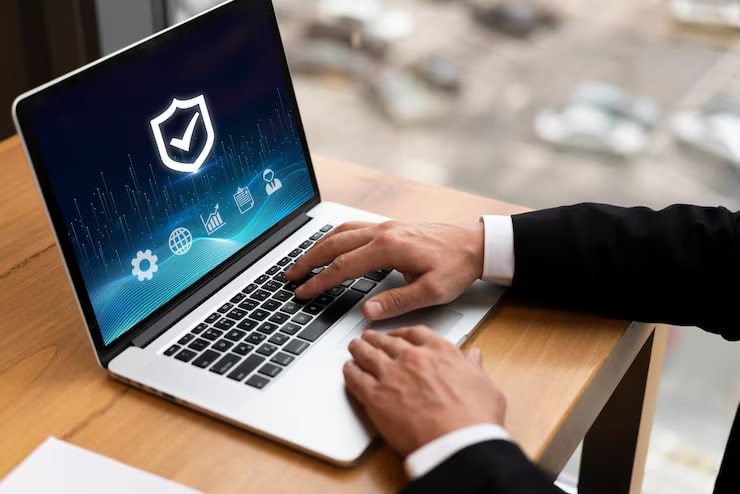In today’s digital age, safeguarding your business against cyber threats is more critical than ever. As technology evolves, so do the tactics of cybercriminals, making robust cybersecurity a non-negotiable priority for businesses of all sizes. In this blog, we’ll dive into essential cybersecurity best practices and explore how the latest cybersecurity technology can fortify your defenses.
Why Cybersecurity Technology is Crucial
Cybersecurity technology has become the backbone of modern business protection strategies. A report from Cybersecurity Ventures projects that global cybercrime costs will hit $10.5 trillion annually by 2025. This staggering figure highlights the urgent need for businesses to adopt advanced cybersecurity measures to protect their sensitive data and maintain operational integrity.
Best Practices for Cybersecurity
Implement Multi-Factor Authentication (MFA)
Multi-Factor Authentication (MFA) is a powerful tool in the arsenal of cybersecurity technology. MFA adds an extra layer of security by requiring users to provide two or more verification factors before accessing systems or data. This means even if a hacker manages to steal a password, they still need the additional factor to gain access.
Stat Check: According to Microsoft, MFA can block over 99.9% of automated attacks, demonstrating its effectiveness in preventing unauthorized access.
Keep Software and Systems Updated
Regularly updating your software and systems is a fundamental practice in cybersecurity. Updates often include patches for known vulnerabilities that hackers can exploit. By keeping your software current, you close security gaps and reduce the risk of cyberattacks.
Pro Tip: Enable automatic updates whenever possible to ensure your systems are always protected with the latest security patches.
Conduct Regular Security Training
Human error is a major factor in many cybersecurity breaches. Investing in regular security training for your employees helps them recognize phishing attempts, understand secure practices, and handle sensitive information appropriately.
Stat Check: According to IBM, 95% of cybersecurity breaches are due to human error, making training a critical component of your cybersecurity strategy.
Use Advanced Endpoint Protection
Endpoint protection is crucial in securing individual devices connected to your network, such as computers, mobile devices, and servers. Advanced endpoint protection solutions utilize cybersecurity technology to detect, prevent, and respond to threats on these devices.
Stat Check: Forrester Research reports that businesses with robust endpoint protection are 60% less likely to suffer a significant data breach compared to those without.
Implement Network Security Measures
Securing your network is essential to protecting your business from cyber threats. This includes using firewalls, intrusion detection systems (IDS), and intrusion prevention systems (IPS) to monitor and block malicious activities.
Pro Tip: Regularly review and update your network security settings to adapt to new threats and vulnerabilities.
Backup Your Data Regularly
Data backups are your safety net in case of a cyber incident such as ransomware attacks or data corruption. Regularly backing up your data ensures that you can quickly restore operations and minimize downtime if a breach occurs.
Stat Check: A Veeam survey found that 83% of businesses that experienced a ransomware attack were able to recover their data because they had a robust backup strategy in place.
Secure Your Remote Workforce
With the rise of remote work, securing your remote workforce is more important than ever. Use secure VPNs, enforce strong password policies, and ensure remote employees have the necessary cybersecurity training.
Pro Tip: Implementing zero-trust architecture can help secure remote access by continuously verifying and validating user access.
| Cybersecurity Technology | Benefit |
| Multi-Factor Authentication | Enhances login security and prevents unauthorized access |
| Endpoint Protection | Detects and prevents threats on individual devices |
| Intrusion Detection Systems | Monitors network for suspicious activity |
| Intrusion Prevention Systems | Blocks malicious activities in real-time |
| Data Backup Solutions | Ensures data recovery in case of loss or attack |
Conclusion
Cybersecurity technology is an ever-evolving field, and staying ahead of threats requires vigilance and proactive measures. By implementing these best practices, your business can significantly reduce the risk of cyberattacks and protect its valuable assets. Remember, cybersecurity is not a one-time effort but an ongoing commitment to safeguarding your digital environment. Stay informed about the latest cybersecurity technology trends, and regularly review and update your security practices to ensure your business remains resilient against emerging threats.







